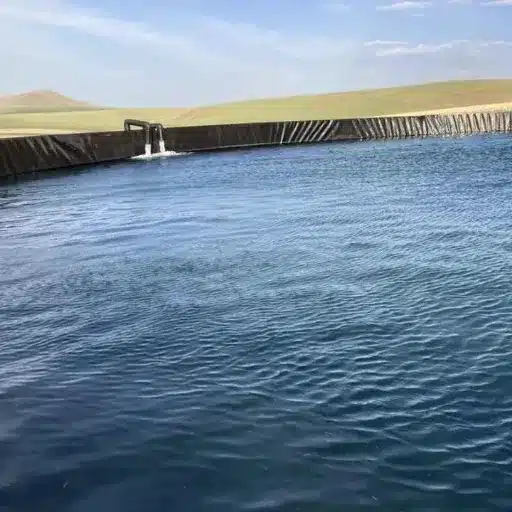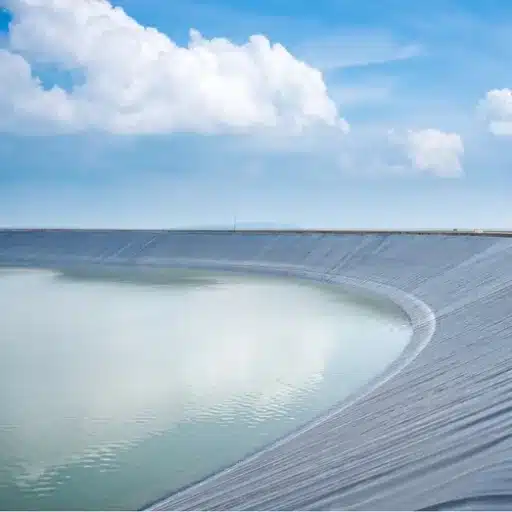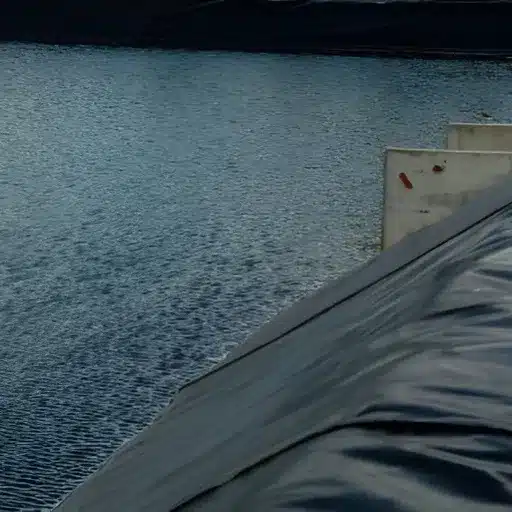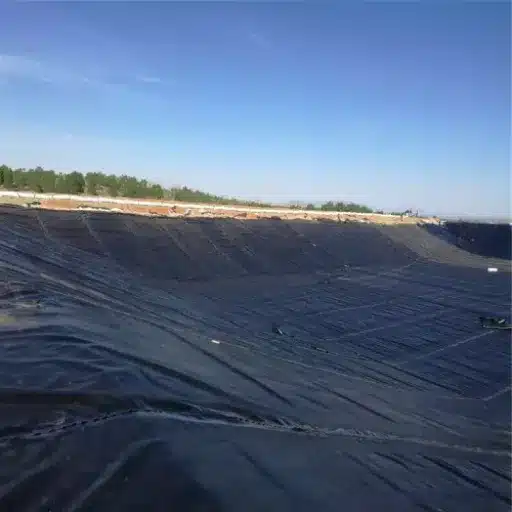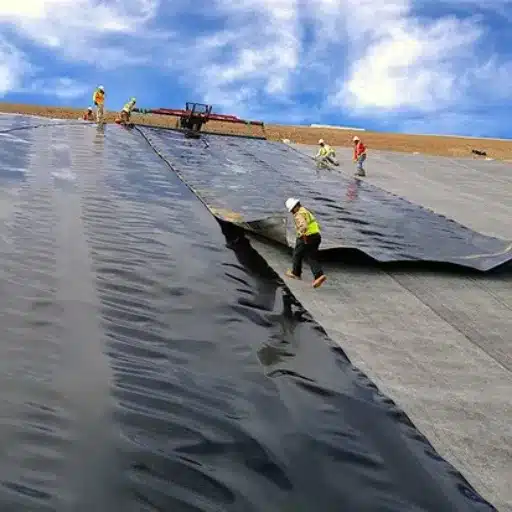Gardening enthusiasts know the struggle all too well—unwanted roots creeping into garden beds, competing with prized plants for nutrients and water. It’s a battle beneath the soil that can hinder your garden’s potential. This is where geotextile fabric comes into play, offering a practical solution to protect your garden from invasive roots while promoting healthy plant growth. But how does this fascinating material work, and is it the right choice for your garden? In this article, we’ll explore the role of geotextile fabric, breaking down its benefits, its limitations, and how it can be effectively used to safeguard your garden from root invasion.
How Does Geotextile Fabric Work in Your Landscape?
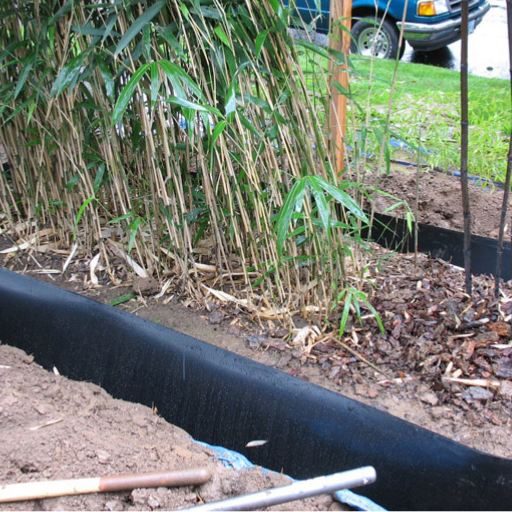
Geotextile fabric works by creating a barrier that allows water and air to flow through while preventing the passage of invasive roots. Made from durable, permeable materials, it is strategically placed between soil layers or around specific plants to block roots from spreading into unwanted areas. This fabric maintains soil structure, supports proper drainage, and reduces erosion, ensuring your landscape stays healthy and organized. By controlling root movement without disrupting essential water and nutrient cycles, geotextile fabric offers an effective solution for long-term landscape management.
Understanding the Weave and Structure
Geotextile fabrics are crafted with intricate weave patterns and material compositions, tailored for specific applications and performance. These fabrics are generally categorized into woven and non-woven types. Woven geotextiles are made of synthetic fibers interlaced to create a firm grid-like structure, offering high tensile strength and stability. This makes them ideal for heavy-duty use, such as road construction, erosion control, and load-bearing projects. Non-woven geotextiles, on the other hand, are made by bonding fibers through heat, chemicals, or mechanical processes, resulting in a felt-like texture. These excel in applications requiring filtration, drainage, and soil separation.
The weave density or “thread count” impacts the permeability and strength of the fabric. Modern geotextiles can achieve filtration rates optimized for managing water flow, often ranging from 90 to 120 gallons per square foot per minute. Additionally, the innovation of polymer coatings and UV-stabilized materials enhances durability, enabling geotextiles to withstand harsh environmental conditions for over 20 years. Such data underscores their adaptability and resilience, making geotextile fabrics a vital component in infrastructure and landscaping projects.
Role in Soil Stabilization and Drainage
Geotextile fabrics play a crucial role in modern construction and environmental management due to their exceptional soil stabilization and drainage capabilities. By separating layers of soil and preventing intermixing, geotextiles enhance the structural integrity of roads, highways, and foundations, ensuring long-term performance under various load conditions. Studies show that their use in reinforcement can increase soil tensile strength by up to 40%, making them indispensable in projects requiring stable and load-bearing surfaces.
When applied to drainage systems, geotextiles facilitate efficient water flow while preventing soil erosion. They act as highly effective filters, capable of maintaining permeability even under saturated conditions. Laboratory tests reveal that high-quality geotextiles can retain fines while managing flow rates that range from 15 to 40 gallons per minute per square foot, depending on material specifications. This performance ensures proper drainage while reducing the risk of sediment clogging in subsurface systems. The incorporation of advanced features like nonwoven and woven structures further tailors their use to specific projects, offering a balance between filtration precision and mechanical strength.
Through these applications, geotextiles significantly contribute to sustainable infrastructure development by optimizing resource use, minimizing maintenance needs, and addressing environmental concerns like soil erosion and water management.
How Geotextile Fabric Offers Durability and Soil Erosion Prevention
Geotextile fabrics play an integral role in enhancing both durability and mitigating soil erosion across a variety of applications. These engineered materials are designed to improve ground stability, prolonging the lifespan of infrastructure while protecting the environment. By acting as a barrier, geotextiles prevent the intermixing of different soil layers, ensuring structural integrity over time. This feature is particularly critical in road construction, where separation is essential to maintain load-bearing capacity and reduce maintenance costs.
A key advantage of geotextiles is their effectiveness in controlling soil erosion, especially in areas where water runoff poses a major risk to landscapes and structures. Studies have shown that properly installed geotextiles can reduce soil loss by up to 90% compared to untreated slopes. Their permeable properties allow water to pass through while trapping soil particles, thus preventing sediment displacement. This makes them indispensable in applications such as riverbank stabilization, coastal protection, and hillside reinforcement.
Furthermore, recent advancements in geotextile technology have introduced materials with enhanced UV resistance and higher tensile strength, making them suitable for extreme environmental conditions. For example, high-strength woven geotextiles are now commonly deployed in large-scale applications such as retaining walls and levees, where long-term performance is critical. These durable fabrics ensure both structural robustness and environmental protection, demonstrating their dual functionality as an engineering and ecological solution.
Can Roots Grow Through Geotextile Fabric?
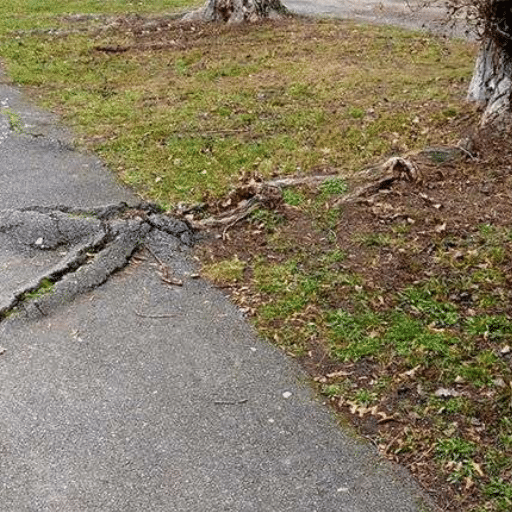
Yes, roots can grow through certain types of geotextile fabric, but it depends on the fabric’s design and purpose. Non-woven geotextiles, typically used for drainage and filtration, have a looser structure that may allow roots to penetrate over time. However, woven geotextiles, designed for reinforcement and separation, generally have a tighter weave, making it more difficult for roots to grow through. Whether roots will penetrate also depends on the plant species and the conditions of the surrounding soil.
Exploring the Growth of Roots and Root System Interaction
Root growth and root system interaction depend on a range of environmental, biological, and physical factors. Soil composition plays a critical role; for instance, well-aerated, nutrient-rich soils promote robust root development, while compacted or waterlogged soils can significantly hinder growth. Additionally, factors such as pH levels, temperature, and moisture availability greatly affect the direction and extent of root expansion.
Recent studies indicate that plants engage in complex root interactions, both competitive and cooperative, depending on the surrounding conditions. For example, root systems can release chemical signals, known as allelopathic compounds, which influence the growth of neighboring plants. Some plants, like legumes, even form symbiotic relationships with soil microorganisms to enhance nutrient uptake, particularly nitrogen.
According to data on root depth variability, it is observed that grasses, which typically have fibrous root systems, may spread horizontally within the topsoil at a depth of 6 to 12 inches. Conversely, trees like oaks, which utilize deep taproots, can extend several feet deep in search of water and minerals. Similarly, crops such as wheat develop root systems up to three feet deep for optimal anchorage and nutrient access. These patterns highlight the adaptability of roots to environmental conditions and their critical role in plant survival.
Furthermore, advancements in agronomy emphasize how soil health management directly impacts root development. Techniques such as crop rotation, minimal tillage, and organic amendments not only improve soil structure but also enhance microbial activity, contributing to a well-balanced ecosystem supportive of diverse root systems. Root interactions are not merely a biological phenomenon; they are integral to the sustainability of agricultural systems and natural ecosystems alike.
How to Block Roots Effectively
Preventing invasive root systems from interfering with structures, neighboring plants, or underground utilities requires a strategic approach combining both physical and biological methods. Root barriers remain one of the most effective solutions. These barriers, often made of plastic or geotextile fabric, can be installed vertically around the desired area to limit root expansion. Studies show that high-density polyethylene (HDPE) barriers are particularly durable and resist degradation over time, making them ideal for long-term use.
Another approach involves using root-pruning techniques, where roots are trimmed periodically to maintain control without harming the overall health of the plant. For smaller plants or shrubs, planting them in containers or raised beds can effectively restrict root growth while maintaining soil health. Additionally, choosing species with non-aggressive root systems can reduce the risk of invasive growth. Research highlights that native plant species often pose fewer root-related issues while supporting local biodiversity.
For larger landscapes, employing chemical solutions like root inhibitors can deter aggressive root growth. Herbicides containing triclopyr or glyphosate can be carefully applied to prevent root proliferation, but these should be used with caution to avoid impacting surrounding vegetation or soil quality. Data indicates that integrating chemical and physical barriers often leads to a 70-80% reduction in unwanted root spread.
Lastly, amending soil conditions can subtly influence root behavior. Compacted or nutrient-deficient soils may drive roots deeper into the ground, keeping them away from surface-level infrastructure. Combining these methods effectively can help manage root systems in an environmentally considerate and cost-efficient manner.
Factors Affecting Root Growth Through Geotextile
- Material Composition
The type of geotextile material significantly impacts its ability to resist root penetration. Nonwoven geotextiles made of polypropylene or polyester are commonly used due to their durability and resistance to degradation. Studies show that polypropylene geotextiles exhibit a higher tensile strength, reducing root intrusion by up to 85%.
- Density and Thickness
The density and thickness of the geotextile layer play a crucial role in root behavior. High-density geotextiles can act as robust barriers, with thicknesses greater than 2.0 mm showing a 90% decrease in root penetration rates. However, choosing the appropriate thickness depends on the surrounding environment and intended application.
- Pore Size
The size of the pores within the geotextile impacts root growth by either allowing or restricting fine root systems. Geotextiles with precision-engineered pore sizes of less than 0.2 mm effectively block root systems without impeding water and air permeability, ensuring a balanced environment for plant growth.
- Moisture Availability
Higher moisture levels at the soil-geotextile interface can encourage aggressive root behaviors, particularly in drought-prone areas. Geotextiles designed with moisture-retentive properties help in stabilizing the soil structure while minimizing excessive moisture accumulation that could promote root growth.
- Environmental Conditions
Temperature fluctuations and soil pH can alter the interaction between roots and geotextiles. For instance, high soil acidity has been observed to increase root vigor, with a measurable impact on root penetration rates through certain synthetic barriers by up to 25%.
- Installation Techniques
Proper installation is key to maintaining geotextile integrity. Wrapping edges securely and ensuring even placement reduce vulnerabilities that roots could exploit. Incorrect installation methods have been shown to increase penetration likelihood by as much as 30%.
By addressing these factors comprehensively, geotextile systems can be optimized for controlling root growth while maintaining soil health and surrounding infrastructure stability.
What Are the Benefits of Geotextile Fabric in a Garden?

Geotextile fabric offers several key benefits in a garden setting:
- Weed Control: It acts as a barrier, preventing weeds from growing while allowing air and water to reach the soil.
- Erosion Prevention: Geotextiles help stabilize soil and prevent erosion caused by wind or water.
- Improved Drainage: By allowing water to pass through while filtering out particles, geotextile fabric enhances drainage and reduces waterlogging.
- Root Management: It controls invasive root growth, protecting surrounding plants and structures.
These benefits make geotextile fabric a practical and effective solution for maintaining a healthy, organized, and sustainable garden environment.
Preventing Soil Erosion and Weed Growth
Combining efficient soil erosion control with weed suppression is crucial for sustainable land and garden management. Geotextile fabric plays an integral role in achieving both goals by acting as a durable barrier. According to recent studies, soil erosion affects nearly 75 billion tons of fertile topsoil globally each year, significantly impacting agricultural productivity and contributing to sediment pollution. Using geotextile fabric helps reduce soil displacement by stabilizing surfaces and providing layered protection against wind and water erosion.
Simultaneously, weed control remains a central concern for gardeners and landscapers. Weeds compete with desirable plants for nutrients, water, and sunlight, often leading to reduced crop yields or compromised garden aesthetics. Research highlights that barriers like geotextiles can block up to 90% of unwanted weed growth when correctly installed. This is accomplished by limiting sunlight access to the soil while allowing air and water to flow through, ensuring optimal conditions for beneficial plants while inhibiting weed proliferation.
For best results, choose high-quality geotextile fabric suited to your specific environment and installation needs. Pairing its application with sustainable practices such as mulching or planting cover crops can further enhance the effectiveness of erosion and weed management strategies.
Enhancing Plant Growth by Allowing Water Movement
Water movement within the soil plays a crucial role in plant growth, as it facilitates the distribution of nutrients and supports root development. Proper soil aeration and drainage are essential to prevent waterlogging, which can lead to root rot and hinder oxygen availability. According to recent studies, well-aerated soils can improve crop yields by up to 15-20%, emphasizing the importance of maintaining suitable water flow.
Geotextile fabrics, when used effectively, can enhance water infiltration and retention in the soil. By ensuring controlled percolation, they prevent excessive runoff, allowing water to reach deeper root systems. Additionally, pairing these fabrics with techniques like drip irrigation can drive water efficiency, reducing waste by as much as 60%. These combined systems not only improve water availability but also promote better overall plant vigor and productivity.
Integrating these practices ensures sustainable soil management, leading to resilient ecosystems and healthier agricultural yields. Prioritizing water balance within the soil enhances root zones, providing plants with the consistent hydration needed to thrive.
How Geotextile Fabric Can Help in Soil Health Improvement
Geotextile fabric plays a pivotal role in enhancing soil health and promoting sustainable land management practices. This highly durable, permeable material is engineered to provide soil stabilization, erosion control, and improved drainage. Its primary function is to create a protective barrier while allowing the exchange of water, air, and other nutrients essential for plant growth.
Research indicates that geotextile fabrics can reduce soil erosion by up to 90%, particularly in areas prone to heavy rainfall or steep slopes. By acting as a reinforcement layer, the fabric helps stabilize weak soils, ensuring the structure remains intact even under heavy agricultural or construction loads. Additionally, geotextile fabrics are instrumental in preventing soil compaction by distributing weight more evenly, thereby maintaining pore spaces essential for aeration and root development.
Another key benefit is their role in water management. Through effective filtration, they facilitate the movement of water to desired areas of soil while preventing the loss of fine particles. This improves soil permeability and reduces surface runoff, which is crucial in mitigating flooding and nutrient depletion. Furthermore, in agricultural applications, the use of geotextile materials can enhance crop yields by preserving soil moisture levels and minimizing fertilizer leaching.
These fabrics are environmentally friendly and long-lasting, making them an economical solution for both agricultural and infrastructure projects. By integrating geotextile fabric into soil management practices, farmers, landscapers, and engineers alike can promote healthier soils, greater productivity, and more resilient ecosystems.
What Are the Different Types of Geotextile Fabric?
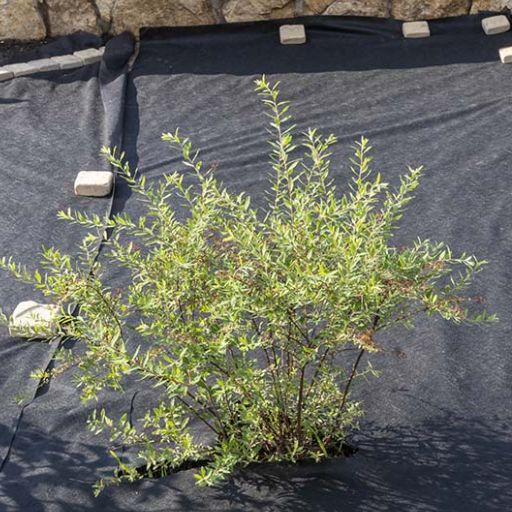
Geotextile fabrics are primarily categorized into three main types based on their manufacturing process and functions:
- Woven Geotextiles – These are made by weaving fibers together, creating a strong and durable fabric. They are primarily used for applications requiring high load resistance, such as road construction and erosion control.
- Non-Woven Geotextiles – Produced by bonding fibers together using heat or chemicals, these fabrics are excellent for filtration and drainage projects. They are commonly used in applications like retaining walls, drainage systems, and landscaping.
- Knitted Geotextiles – Created by interlocking fibers through a knitting process, these fabrics are less common but are used in specialized applications where flexibility and strength are required.
Each type serves specific purposes, allowing users to select the most suitable option for their project needs.
Differences Between Woven and Non-Woven Geotextile Fabric
Woven and non-woven geotextile fabrics differ significantly in their construction, performance, and applications. These differences often guide their selection in various civil engineering and environmental projects. Below is a detailed comparison of the two types:
- Manufacturing Process
- Woven Geotextiles are created by weaving individual threads, usually made from materials like polypropylene or polyester, into a tight, grid-like structure. This method offers high tensile strength and durability.
- Non-Woven Geotextiles are produced through bonding fibers by chemical, mechanical, or heat processes. This results in a fabric that is felt-like, soft, and permeable.
- Tensile Strength and Durability
- Woven geotextiles are notably stronger and resistant to stretching, making them ideal for situations requiring high load capacity, such as reinforcement of roads or retaining walls. For example, some woven geotextiles exhibit tensile strengths up to 200 kN/m or more.
- Non-woven geotextiles, while less strong, are better suited for applications that prioritize filtration or drainage over load-bearing, with tensile strengths often ranging between 10-50 kN/m.
- Permeability and Filtration
- Non-woven geotextiles are more permeable, with performance optimized for filtering and separating soil while allowing water to pass through effectively. They are often used in drainage systems where efficient water flow is required.
- Woven geotextiles, by contrast, have lower permeability due to their tightly woven structure and are less effective in filtration-focused applications.
- Applications
- Woven Geotextiles: Commonly used in roads, railroads, and other load-bearing projects requiring reinforcement and stabilization. Their higher cost is justified by longevity in large-scale infrastructure.
- Non-Woven Geotextiles: Ideal for moisture management, these are frequently used in drainage systems, erosion control, and landscaping projects.
- Cost
Woven geotextiles typically have a higher production cost than non-woven varieties. However, their durability and long-term performance in reinforcement applications can result in reduced maintenance expenses over time. Non-woven options, being more affordable, are often the go-to choice for less demanding applications.
Materials Used: Polypropylene vs. Polyester
When considering polypropylene versus polyester, I always focus on their distinct properties to match the needs of a project. Polypropylene is lightweight, resistant to moisture, and highly durable, making it ideal for filtration, packaging, or geotextiles. On the other hand, polyester is known for its strength, versatility, and resistance to stretching and shrinking, which is perfect for applications requiring flexibility and long-term wear. By weighing these characteristics, I ensure the material selection aligns perfectly with specific project demands.
Choosing the Right Type of Fabric for Your Needs
When choosing the right type of fabric for my needs, I focus on the specific requirements of the project. For example, if I need something lightweight and moisture-resistant, I tend to choose polypropylene. If strength, durability, and flexibility are more critical, I often go with polyester. By assessing the unique demands and conditions of each project, I can confidently select the fabric that offers the best performance and longevity.
How to Properly Install Geotextile Fabric in Your Landscape?
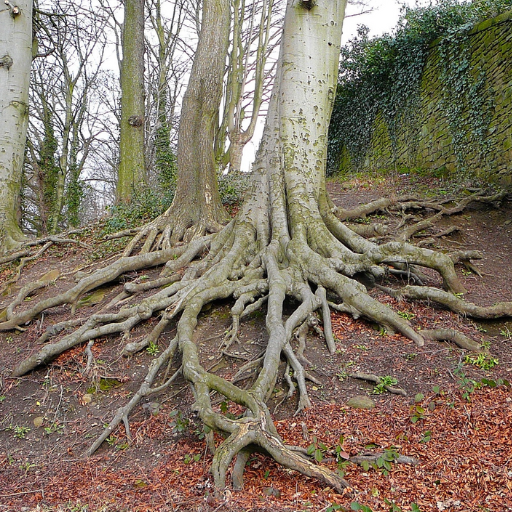
- Prepare the Area
Clear the installation site of any debris, vegetation, or large rocks. Smooth the surface to create a level and stable base for the fabric.
- Measure and Cut the Fabric
Measure the area to determine how much geotextile fabric is needed. Unroll the fabric and cut it to size using scissors or a utility knife, ensuring it fits the specified area with minimal gaps or overlaps.
- Position the Fabric
Lay the fabric flat over the prepared surface. Overlap edges by at least 6 inches if using multiple pieces to prevent gaps. Make sure the fabric is taut and free of wrinkles.
- Anchor the Fabric
Secure the fabric using landscape staples or pins, spaced approximately 1 foot apart along the edges and at any overlaps. This prevents the fabric from shifting during installation.
- Add Cover Material
Once the fabric is secured, cover it with the appropriate material, such as gravel, sand, soil, or mulch, depending on your landscaping needs. This layer provides stability and enhances durability.
By following these steps, you can ensure the proper installation of geotextile fabric, enhancing the performance and lifespan of your landscaping project.
Common Mistakes to Avoid When Using Garden Fabric
- Choosing the Wrong Fabric Type
Not all garden fabrics are the same. Using the wrong type, such as selecting fabric for weed control in areas that require erosion control, can lead to poor performance. Research and select the appropriate fabric for your specific needs to ensure optimal results.
- Improper Fabric Overlap
Failing to adequately overlap fabric edges can allow weeds to grow through gaps. Experts recommend overlapping the edges by at least 6-12 inches to provide sufficient coverage and prevent weed penetration.
- Skipping the Securing Step
Neglecting to secure the fabric properly with staples or pins may cause it to shift over time, especially in windy conditions or areas with heavy foot traffic. Ensure you anchor the fabric securely every 12-18 inches along the edges and throughout the center.
- Insufficient Ground Preparation
Installing garden fabric without first clearing the ground of debris, rocks, or existing weeds can reduce its effectiveness. Take the time to properly level the ground and remove obstructions to create a stable surface for the fabric.
- Covering with Too Thin a Layer
Applying a layer of mulch, soil, or other material over the fabric that is too thin can result in exposure to sunlight, which may degrade the fabric over time. Use a sufficient covering (typically 2-3 inches) to protect the fabric and prolong its lifespan.
- Blocking Water Drainage
Garden fabric should allow water to pass through. Using non-permeable materials or failing to align it correctly can block drainage, causing water pooling and plant health issues. Always double-check that the fabric and covering allow proper water flow.
- Not Accounting for Planting Needs
Cutting holes that are too large for plants or failing to add openings where needed can compromise the fabric’s weed barrier function. Measure carefully and make precise cuts to ensure plant health and maintain weed control.
By avoiding these common mistakes, you can maximize the effectiveness of your garden fabric, ensuring a longer-lasting and more efficient landscaping solution. A little attention to detail during installation can make all the difference!
Ensuring Effectiveness of Geotextile Fabric Over Time
To maintain the long-term effectiveness of geotextile fabric, proper care and strategic measures are essential. Regular inspections of the fabric’s surface and surrounding areas can help identify any signs of wear, tear, or displacement that may compromise its functionality. For example, studies show that geotextile fabrics exposed to heavy UV light for prolonged periods may degrade over time. Using a layer of mulch or gravel as a covering can shield the fabric from direct sunlight, extending its lifespan significantly.
Additionally, keeping the fabric free from clogging is crucial, particularly in applications where drainage is a primary function. Over time, sediment or debris accumulation may reduce permeability. Cleaning or replacing clogged sections ensures water can pass through effectively, preventing waterlogging or erosion issues. Research suggests that fabrics with a higher pore size or those engineered with advanced filters are better suited for areas with high sedimentation risks.
Another vital factor is ensuring proper anchoring. Harsh weather conditions, such as strong winds or heavy rains, can sometimes cause geotextile fabric to shift. Secure anchoring techniques, such as using pins or weights at regular intervals, have proven to keep the fabric firmly in place even during adverse conditions. Periodically checking the anchoring points adds an additional safeguard to the system’s stability.
By prioritizing maintenance and considering advancements in fabric technology, geotextile materials can remain functional and efficient for years, enhancing the durability and performance of landscaping, erosion control, and drainage systems.
Reference Sources
- Case studies on application of coir geotextiles for soil stabilization – This study explores how geotextiles enable vegetation to take root and their role in soil stabilization.
- Assessing the knowledge of county extension agents on geotextile applications for agricultural practices in Oregon and Idaho – This research reviews geotextile applications, including their design to allow plant growth through them.
- Maryland State Highway Administration Research Report – This report discusses the impact of geotextiles on root growth and soil compaction.
Top Geotextile Fabric Suppliers in China
Frequently Asked Questions (FAQs)
Q: What is geotextile fabric and how is it used in landscaping?
A: Geotextile fabric is a type of material typically made from synthetic fibers. It is used in landscaping to help to prevent soil erosion, improve soil stability, and act as a barrier between the soil and plant roots.
Q: How does landscape fabric protect your garden from roots?
A: Landscape fabric, often a non-woven fabric, acts as a barrier to prevent roots from growing into unwanted areas. This fabric can effectively stop tree roots and other plant roots while allowing plants to grow in designated areas.
Q: What is the difference between woven and non-woven geotextile fabric?
A: Woven geotextile fabric is made by weaving fibers together, resulting in a strong material suitable for high-strength applications. Non-woven fabric is made by bonding fibers together, typically used for filtration and separation purposes in landscape projects.
Q: Can geotextile fabric help prevent soil erosion in gardens?
A: Yes, geotextile fabric can help prevent soil erosion by stabilizing the soil and allowing water to pass through while keeping the soil intact. Properly installed and maintained, it is effective in erosion control.
Q: Is landscape fabric porous, and why is that important?
A: Yes, landscape fabric is designed to be a porous fabric, allowing water and nutrients to reach the soil while preventing weed growth and controlling erosion. This permeability is essential for maintaining a healthy garden environment.
Q: How should geotextile fabric be installed in a garden?
A: Geotextile fabric should be laid flat on the soil surface, with the edges overlapping. It is important to secure the fabric in place with landscape staples to prevent movement and ensure effective protection against roots and weeds.
Q: Will using landscape fabric affect the growth of desirable plants?
A: When used properly, landscape fabric allows plants to grow by permitting water and nutrients to pass through while blocking weeds. It is essential to select the right type of fabric for your specific plants and garden conditions.
Q: Can geotextile fabric be used around trees to control root growth?
A: Yes, geotextile fabric around trees can help manage tree roots by creating a barrier that directs roots downward rather than spreading laterally into unwanted areas. This can protect nearby structures and garden beds.
Q: What type of maintenance is required for landscape fabric?
A: Regular maintenance includes checking for any exposed or damaged areas of the fabric and ensuring it remains covered with mulch or soil. This helps to keep the fabric in place and maintain its effectiveness.
Q: How long does geotextile fabric typically last in a garden setting?
A: Geotextile fabric, especially when made from durable synthetic materials, can last for several years in a garden setting if properly installed and maintained, providing long-term protection and soil stability.


